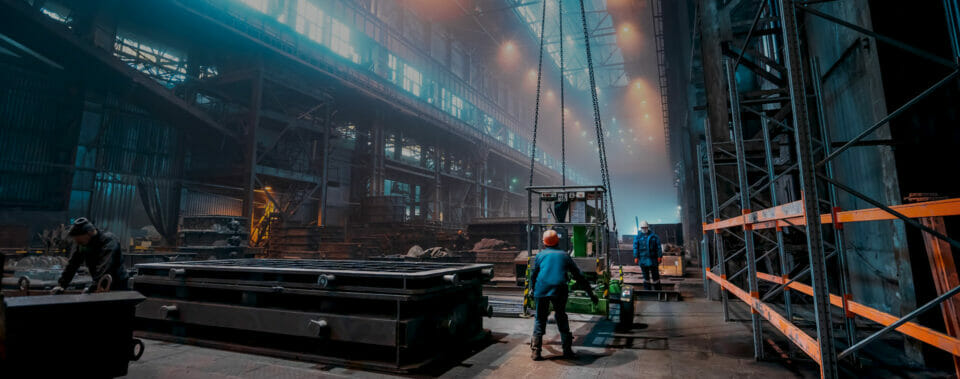
Holiday Bonus Episode: Safety Tips You Need This Season | Risk Matrix Episode 122
THE RISK MATRIX Cutting-edge podcast on occupational safety and risk management. Hosted by industry titans: JAMES JUNKIN, MS, CSP, MSP,…
PSM compliance will be more important for industries like manufacturing, chemicals and utilities as OSHA inspections and potentially citations and fines increase this year. Learn the 3 most common PSM citations and how you can avoid them.

A recent accident in a petrochemical plant resulted in a chemical explosion that sent 10 people to the hospital and caused the local community to shelter in place.
Incidents and accidents like this have become more common and will continue to plague the oil and gas industry. These facilities are most often governed by, but not in compliance with, the process safety management (PSM) standard. Facilities that are PSM-compliant don’t experience fires, explosions and chemical releases at the same rate.
As such incidents and accidents rise industry-wide, facilities that are subject to PSM compliance can expect an increase in OSHA inspections.
When preparing for an OSHA inspection, it’s crucial for employers to understand the difference between personal safety and process safety and take key steps to enhance their internal safety management processes.
Across most industries, worker safety is often focused on preventing personal injury caused by lower-level, more common hazards such as slippery floors or incorrect use of equipment. In high-risk industries, such as manufacturing, utility services and chemicals, where the release of toxic, flammable or reactive chemicals is possible, greater attention needs to be given to preventing these large-scale and potentially catastrophic workplace incidents.
As a hiring client, it is your responsibility to understand the safety risks and requirements for your business and take the appropriate actions to keep your staff, contractors, visitors and the surrounding environment safe from process safety hazards. Process safety management (PSM) is the 14-step process by which through analysis and revision of operating procedures, incident investigation, employee and contractor training, emergency planning and safety audits, you can avoid risky incidents and violation-related fines and penalties, set forth by OSHA.
When it comes to worker safety on the job site, the hiring company is often the one held liable. Beyond the financial cost of cleaning up and repairing damage from a hazardous incident such as a fire or explosion, the resulting reputational damage can have an even greater impact on the company.
When large-scale incidents make the mainstream news – such as the recent Chemtool Inc. explosion in Rockton, Illinois – not only is the company’s reputation as a safe employer affected, business partners and consumers across the country begin to associate the negative news with the company’s brand or product. Additionally, the surrounding community is negatively impacted, like the residents of Rockton, Illinois, for example, who were forced to evacuate their homes.
An effective PSM program that is compliant with OSHA requirements will protect your employees, contractors and any visitor to your facility. When developing your PSM program, keep in mind the three most common PSM citations for employers and contractors:
Poor contractor management and oversight.
When it comes to PSM, look beyond the total recordable incident rate (TRIR) and experience modifier rate (EMR), which are related to personal injury and not process safety. While these are important and there is a time and a place to improve them, PSM focuses on the critical nature of contractor oversight.
While personal injuries have trended downward in the last decade, there’s been no change in the number of serious injuries or fatalities. Contractor management and oversight are still critical to ensuring every worker goes home safely at the end of each day. The way to do this is to have a set program in place that combines training, daily checks and balances for workers and their field managers.
Contractor training.
Awareness-level and end-user training are both critical to communicating the real hazards of the job. Unfortunately, recent audits conducted by Veriforce have revealed that many contractor companies don’t provide even basic OSHA-required training to their field staff, leaving potential hazards waiting to happen.
Like regular employees, contractors need to be well-informed of the risks involved in their work and the importance of following safety protocols. Anyone handling hazardous materials needs to be diligent. Often, contractor companies do not have the same resources as hiring companies do, so they look to these companies to help fill the gap in training.
Poor contractor selection.
A formal vendor and contractor safety prequalification program is critical to choosing the right contractors to work on your site. A formal program should require outside vendors and contractor companies to meet OSHA and your company’s occupational health and safety requirements. It can not only help you manage your contractor workforce but will mitigate the risk when selecting contractor companies to source from. The benefits of digitizing your PSM and contractor selection programs are immense, but the process can be overwhelming. By using a third-party verification system, you’ll find support in assembling the data – such as injury rates and previous citations – verifying vendor internal policies and standardizing your own employee and contractor training programs.


THE RISK MATRIX Cutting-edge podcast on occupational safety and risk management. Hosted by industry titans: JAMES JUNKIN, MS, CSP, MSP,…

THE RISK MATRIX Cutting-edge podcast on occupational safety and risk management. Hosted by industry titans: JAMES JUNKIN, MS, CSP, MSP,…
We’ll send you practical and insightful supply chain risk management info that can benefit your business. Plus, important company updates that keep you in the loop.
